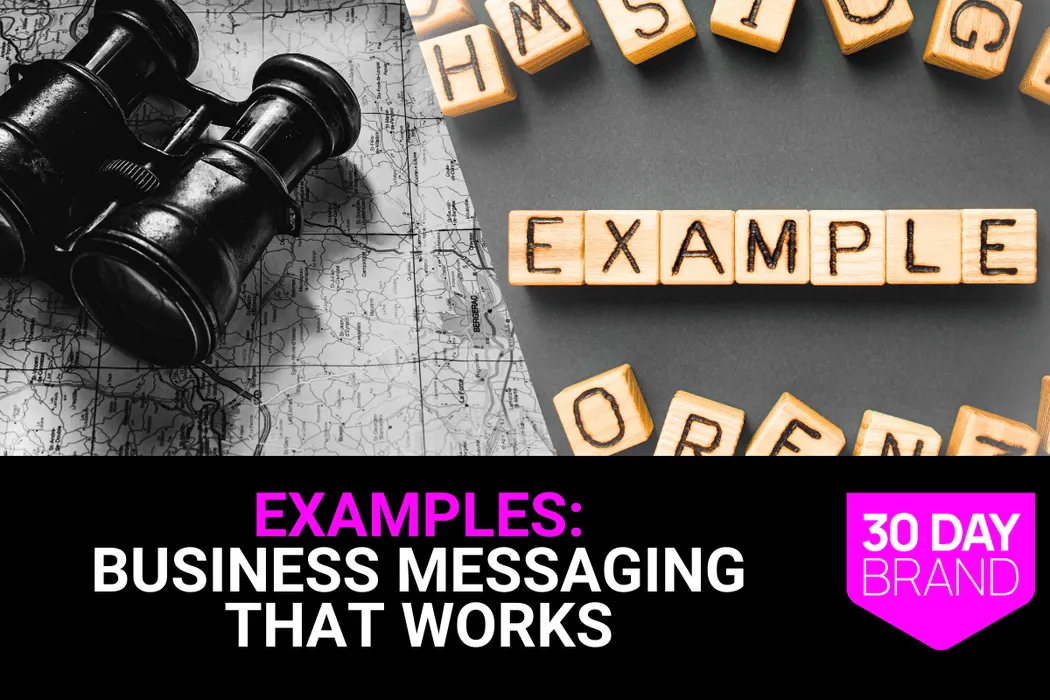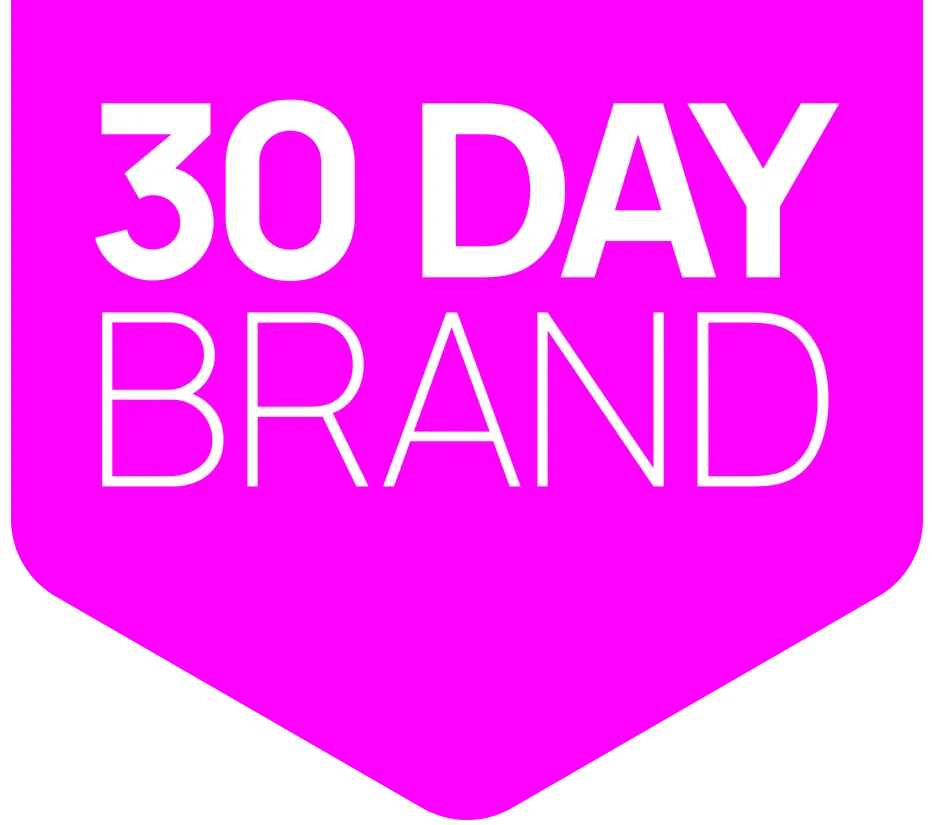
Business Messaging Examples: What Works and What Doesn’t
Quick Definition
Business messaging examples = Real-world case studies of companies that either nailed their messaging and are now swimming in cash, or completely botched it and became a cautionary tale. This is where theory meets reality.
The Pain of Generic Messaging
You’ve read the articles. You’ve downloaded the templates. You’ve even tried to build a messaging framework. But your copy still sounds like a generic, soulless corporate robot. You’re using all the right words—“innovative,” “solutions,” “synergy”—but you’re getting no traction. Why? Because you’re trying to copy the “what” without understanding the “why.” 74% of brands could disappear tomorrow and no one would care (Havas Group, 2024), because their messaging is completely forgettable. You're tired of sounding like everyone else. You're frustrated that your unique value is getting lost in a sea of sameness. It's time to stop looking at templates and start looking at real-world examples of what works and what doesn't. For a systematic approach to building your own messaging, check out our business messaging framework guide.
What Works: 3 Examples of Killer Business Messaging
Example 1: Slack - "Be less busy"
The Message: Slack’s core message isn’t about features like channels or integrations. It’s about a feeling. It’s about the pain of being overwhelmed and the promise of a better way to work. “Be less busy” is a direct, empathetic, and outcome-focused message that speaks to the universal pain of modern work.
Why it Works:
It’s Pain-First: It starts with the problem, not the solution. Everyone feels busy. Slack taps into that universal feeling and offers a way out.
It’s Simple: It’s three words. You don’t need a manual to understand it. It’s a message that can be repeated by everyone in the company, from the CEO to the intern.
It’s Aspirational: It’s not just about what Slack does; it’s about who you can become by using it. You can be the person who is in control of their workday, not the other way around.
The Takeaway: Stop selling your features. Sell the feeling your customers will have after they use your product. Find the universal pain point and make your product the aspirin.
Example 2: Ahrefs - "We help you rank higher and get more traffic"
The Message: Ahrefs is a complex tool with a million features. But they don’t lead with that. They lead with the two things their customers actually want: to rank higher in Google and to get more traffic to their website. It’s a simple, direct promise that speaks directly to the business goals of their target audience.
Why it Works:
It’s Outcome-Oriented: It doesn’t talk about what Ahrefs is; it talks about what Ahrefs does for you. It’s a clear, tangible result that every marketer understands.
It’s Specific: It’s not just about “marketing”; it’s about “ranking higher” and “getting more traffic.” This specificity makes the promise more believable and more desirable.
It’s Confident: There’s no fluff. It’s a bold, direct statement that positions Ahrefs as a powerful tool for achieving a specific goal.
The Takeaway: Don’t be afraid to be direct. If you can help your customers achieve a specific, measurable result, say so. Cut the jargon and get to the point.
Example 3: Mailchimp - "Get down to business and grow your own way"
The Message: Mailchimp started as an email marketing tool, but they’ve grown into a full marketing platform. Their messaging has evolved with them. “Get down to business and grow your own way” is a message that speaks to the entrepreneurial spirit of their core audience. It’s about empowerment, not just email.
Why it Works:
It’s Empowering: It’s not about what Mailchimp does; it’s about what you can do with Mailchimp. It’s a message that puts the customer in the driver’s seat.
It’s Flexible: “Grow your own way” acknowledges that every business is different. It’s a message that is inclusive and adaptable, just like their platform.
It’s Human: The language is simple, direct, and a little bit playful. It doesn’t sound like it was written by a committee. It sounds like it was written by a human being who understands the struggles of growing a business.
The Takeaway: Your message should reflect your brand’s personality. Don’t be afraid to be human. People buy from people, not from corporations.
What Doesn’t Work: 3 Examples of Messaging That Misses the Mark
Example 1: The Jargon-Filled Homepage
The Message: “We leverage synergistic paradigms to empower our clients with innovative, end-to-end solutions that optimize their core business processes and drive impactful results.”
Why it Fails:
It’s Meaningless: This sentence is a collection of buzzwords that sound impressive but mean absolutely nothing. It’s a classic case of trying to sound smart and ending up sounding stupid.
It’s Self-Centered: It’s all about “we” and “our.” It doesn’t say a single thing about the customer or their problems.
It’s Forgettable: Because it’s so generic, it’s completely forgettable. You could swap out the company name and it would work for any other B2B company on the planet.
The Fix: Use the “So What?” test. What does “synergistic paradigms” actually mean? What is the real-world result of your “end-to-end solutions”? Translate your jargon into your customers’ language.
Example 2: The Feature-Focused Sales Pitch
The Message: “Our new software has a quad-core processor, 16 gigs of RAM, and a 4K display. It’s the most powerful machine on the market.”
Why it Fails:
It’s a List of Features: It’s a classic case of selling the drill, not the hole. Your customers don’t care about your specs; they care about what your product can do for them.
It’s Not Differentiated: Your competitors also have powerful machines. By focusing on features, you’re inviting a direct comparison on price.
It’s Not Emotional: There’s no story here. There’s no pain. There’s no transformation. It’s just a list of facts that will be forgotten as soon as the conversation is over.
The Fix: Translate your features into benefits. What does a quad-core processor actually mean for your customer? Does it mean they can render videos twice as fast and get home to their family earlier? Sell that.
Example 3: The Vague Value Proposition
The Message: “We help businesses succeed.”
Why it Fails:
It’s Too Broad: What kind of businesses? What kind of success? This message is so vague that it’s completely meaningless.
It’s Not Believable: No one believes that you can help every business succeed. It’s a promise that is impossible to keep.
It’s Not Differentiated: Every consulting firm on the planet claims to help businesses succeed. This message does nothing to set you apart from the competition.
The Fix: Get specific. Who do you help? What specific result do you help them achieve? The more specific you are, the more believable and desirable your message will become.
Quick Implementation Guide
Start here: Audit your own homepage. Does it sound more like the “What Works” examples or the “What Doesn’t Work” examples? Be honest.
Then do this: Pick one of the “What Works” examples and try to apply its principles to your own messaging. For example, if you like Slack’s approach, what is the feeling you want to sell?
Measure this: Your bounce rate. If you can get your homepage message right, you should see a significant drop in your bounce rate. That’s the first sign that you’re on the right track.
Key Statistics
74% of brands could disappear tomorrow and no one would care (Havas Group, 2024).
Companies that focus on benefits over features see a 27% higher conversion rate (Nielsen Norman Group, 2024).
Specific, concrete language increases message credibility by 47% (Stanford Graduate School of Business, 2024).
FAQ
Can I just copy these examples?
No. That’s the whole point. You can’t copy someone else’s message because you don’t have their business, their customers, or their brand. You have to use these examples as inspiration, not as a template. Understand the principles behind them and apply those principles to your own business.
What if my business is boring? How can I have a cool message like Slack?
There are no boring businesses, only boring messages. Every business solves a problem for someone. Your job is to find the pain and the passion behind that problem. Even if you sell accounting software, you’re not just selling software; you’re selling peace of mind, you’re selling time, you’re selling the ability for a small business owner to sleep at night. That’s not boring.
How do I know if my message is working?
Your customers will tell you. They’ll start using your language back to you. They’ll nod their heads in meetings. They’ll close deals faster. And your bank account will tell you. If your revenue is going up, your message is working.
What’s the biggest mistake people make when they try to create a new message?
They do it in a vacuum. They sit in a boardroom with a bunch of other people from their company and they brainstorm a bunch of words that sound good to them. But they never talk to their customers. Your customers have the message. You just have to be willing to go out and listen to it.
How long does it take to get this right?
It's a process, not a project. You're never going to be "done" with your messaging. You have to constantly be testing, learning, and refining. But you can make a massive improvement in 30 days if you're focused. Start with the 30-day plan and see for yourself. To track your progress, use our guide on measuring business messaging ROI.
Ready to Stop Sounding Like Everyone Else?
You’ve seen what works and what doesn’t. You know the difference between a message that converts and a message that confuses. Now it’s time to apply these lessons to your own business.
Here’s what to do next:
Step 1: Start with our FREE Brand Message Analyzer Tool to get an objective look at how your current messaging stacks up against the examples in this article.
Step 2: Pick one thing to fix. Don’t try to overhaul everything at once. Just pick one thing—your homepage headline, your sales pitch opener, your LinkedIn summary—and make it better.
Step 3: For a systematic approach to crafting a message that sets you apart, explore our proven SCALE System. It’s the framework we use to help our clients go from generic to unforgettable.
Step 4: When you’re ready for an expert to help you craft a message that makes you the only choice, book a call with our team. We’ll help you find the words that will transform your business.
Remember: your message is your most powerful weapon. Don’t let it be a generic, forgettable liability. Use these examples to sharpen your message and cut through the noise.
Your competitors are still talking about synergistic paradigms. You can be the one who actually says something that matters.










